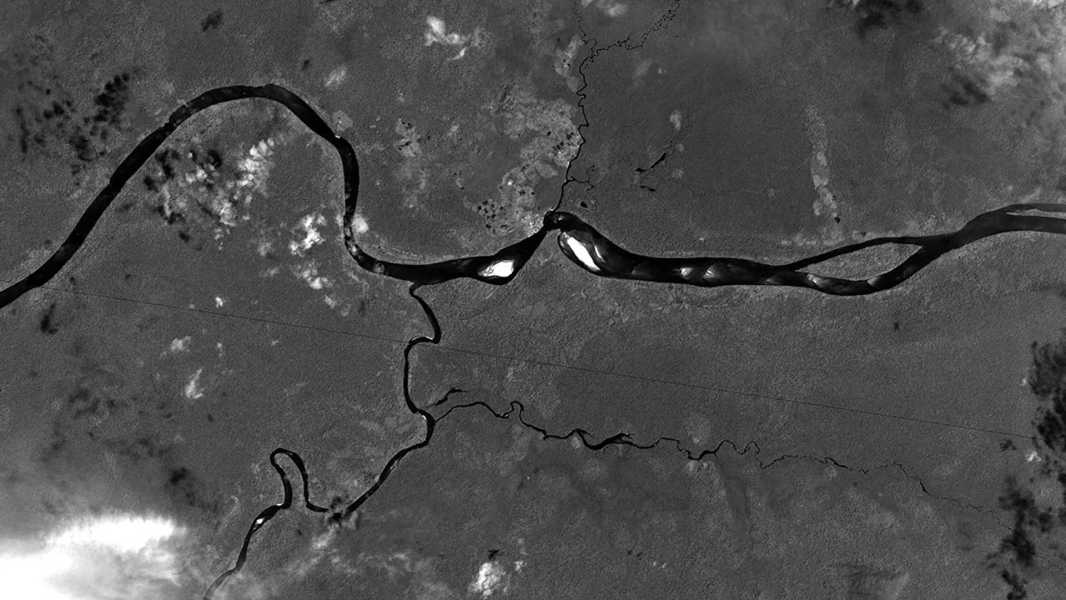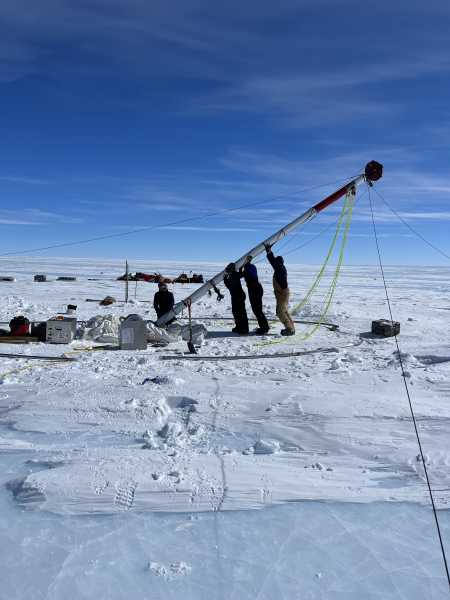
In the new paper, the researchers refer to the Casiquiare River (flowing north-south in the center of this image), which connects the Orinoco River (flowing east-west) to the Rio Negro, as a “hydrological analogue of a wormhole between two galaxies.” (Image credit: Coordenação-Geral de Observação da Terra/INPE, CC BY-SA 2.0)
Rivers join together downstream, flow downslope, and eventually empty into an ocean or terminal lake: these are the fundamental principles of how waterways and basins function. But rules are made to be broken. Sobey and Siegel present nine rivers and lakes in America that defy hydrological expectations.
All of these illustrate cases of bifurcation, where a river divides into branches that continue downstream. But unlike standard bifurcations, these examples do not return to the main waterway after the split.
For example, the Casiquiare River in South America is a shipping lane that connects the continent’s two largest watersheds, the Orinoco and Amazon basins, acting as a distributary of the former and a tributary of the latter. It is “the hydrological equivalent of a wormhole between two galaxies,” the authors argue. The Casiquiare splits off from the Orinoco and meanders through dense, nearly level rainforest to join the Rio Negro and, ultimately, the Amazon. The authors point out that a small gradient (less than 0.009%) is enough to move significant volumes of water downriver, and that this unusual occurrence is a consequence of incomplete river capture. They also note that understanding of the Casiquiare continues to evolve.
Dutch colonists first mapped the remote Wayambo River in Suriname in 1717. The river can flow either east or west, depending on rainfall and human intervention in its flow through sluices. It is also close to gold and bauxite deposits, as well as oil production, and its two-way flow makes it difficult to predict the spread of pollutants.
Of all the rivers they studied, the scientists described the Echimamish River, high in the Canadian wilderness, as “the most mysterious.” Its name translates as “water that flows both ways” in the Cree language. The river connects the Hayes River and the Nelson River, and according to some sources, the Echimamish flows from its middle to both larger rivers. However, its bed is flat and interrupted by beaver dams, which even today causes uncertainty about the direction of its flow and where it changes.
The authors also examined six other unusual waterways, including lakes with two outlets and streams that flow into both the Atlantic and Pacific oceans, highlighting how much remains to be learned about how our planet's waters function.
This article was originally published on Eos.org. Read the original article.

Rebecca DzombakSocial Links NavigationScience Writer
Rebecca Dzombak is a science writer and editor with a PhD in Earth and environmental sciences. In addition to freelancing, she works for the American Geophysical Union's media group, covering topics related to Earth and space science.
You must verify your public display name before commenting.
Sourse: www.livescience.com





